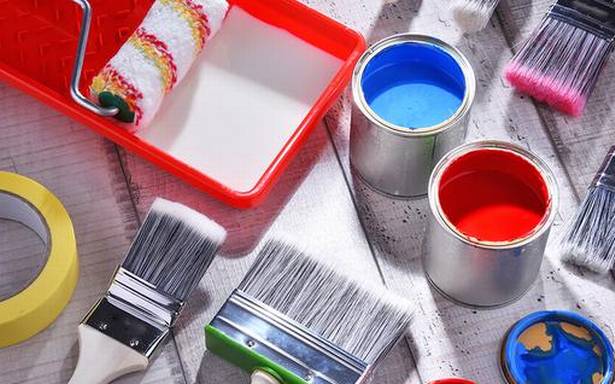Is it time that you paint your house again to give it the fresh look and vibe that it might have lost? If yes, it might be the time where you start to prepare well for this process and begin to understand what would be required for it to go smoothly and effectively. You will have two major options to choose from – you could choose to hire a professional contractor who would help you do the job or you can also pick up the paintbrushes and a ladder and get to the job yourself. However, irrespective of the option that you choose to continue with, there are a few things that you might need to be aware of to be able to enter and finish the job to perfection. Since the budget is one of the most important parts of this process, using a house painting cost calculator would be one of the initial steps that you can start with.
Since painting is an intricate task, there are several differences between the interior and exterior painting of the house. Here are the basic points that might help you differentiate between and paint both sides of your house.
Important aspects while painting the exteriors of the house:
- Clean the walls – Make sure to clean the exterior portion of the walls so that the paint sticks to the walls well. Hiring a contractor will ensure that they wash the walls before they start the actual painting.
- Paint in less-extreme weather – Painting when it is very cold outside will make the paint dry slowly and unevenly. Contrarily, in the summer, the paint will dry rapidly and may not give the desired results. Ensure to check for the ideal season before you begin painting.
- Check the structure – In case the internal structure of the house like the wood, beams, bricks, etc are rotten or damaged, painting over them might just be futile as the parts will continue to rot irrespective of the paint. Using appropriate measures like a wood hardener would be ideal.
- Oil-based paints – Waterproofing Asian Paints that are oil-based will give better results on the outside portions of the house. Since they are synthetic, they are strong enough to endure the different weather conditions and outdoor elements. Since these paints have a strong and pungent odor, it is important to be cautious and wear a mask while painting.
Important aspects while painting the interiors of the house:
- Prime the walls – If your paints are not already mixed with a primer, use a primer before you apply the actual coat of paint. If this step is skipped, the top coat may not stick well to the walls, resulting in an imperfect job. A primer also helps to cover up extra stains on the walls
- Latex paints – Water-based or latex paints are ideal for the indoors. Since they have an impeccable color-retention factor along with fast drying, and overall environmental friendliness, they can be used to paint the interiors of the house. They can withstand moisture and do not have a pungent smell.
- Prep the rooms – While most of us are aware of this step, reiteration always helps as getting everything out of the way in the beginning or covering the furniture and extra elements with sheets or tape would make sure to not ruin them with paint splashes.
- Mix the colors – If you are using different paint cans, it may be possible that the shades may be slightly different due to the uneven mixing of the colors. Pour all the shades into a big, sealable bucket and use that for your walls.
If you feel that the task is too demanding to do alone, hire professional experts who can help you with the process. Enjoy the new look of your home!
